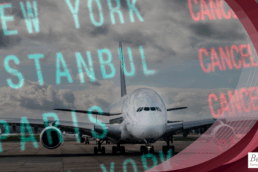The H-1B visa program, a critical tool for U.S. employers seeking to hire specialized foreign talent, has reached a new turning point.
As of October 2025, the fiscal year 2026 H-1B cap has officially been met, closing the window for new cap-subject filings. This milestone coincides with sweeping changes introduced under a Presidential Proclamation that took effect on September 21, 2025, requiring a $100,000 supplemental payment for all new H-1B petitions.
The new fee represents one of the most dramatic shifts in the program’s history, signaling a broader effort by the administration to reform nonimmigrant visa categories and tighten compliance across the board.
What the Presidential Proclamation Means
The September 2025 proclamation applies to all new H-1B petitions, not extensions or amendments for current visa holders. Employers seeking to file new petitions must now submit an additional $100,000 payment at the time of filing as a condition of eligibility.
According to USCIS, petitions that do not include this supplemental payment will be automatically denied.
This fee represents a dramatic shift from previous cost structures and is intended to “disincentivize misuse of the H-1B category”, particularly by employers that heavily rely on foreign workers in lower-wage positions.
However, many in the business and legal community are raising concerns that the new rule may disproportionately affect startups, small businesses, and nonprofit organizations, which often depend on specialized foreign talent to compete globally.
“This change is monumental,” says Rosanna Berardi, Esq., Managing Partner of Berardi Immigration Law. “A $100,000 supplemental payment will fundamentally reshape the H-1B landscape. Most employers simply won’t be able to absorb that cost, which means fewer opportunities for highly skilled professionals to contribute to the U.S. economy.”
Ongoing Petitions and the Government Shutdown
Compounding the challenge, the federal government shutdown has created additional obstacles for employers and attorneys filing petitions this fall.
While USCIS will continue processing H-1B, H-2A, H-2B, and CW-1 petitions, the shutdown has limited access to required supporting documents, such as a Certified Labor Condition Applications (LCAs) from the Department of Labor (DOL).
USCIS has stated that it will treat the shutdown as an “extraordinary circumstance” if a petitioner misses a filing deadline due to delays in obtaining these certifications. Employers must include evidence showing that the shutdown caused the delay, and the agency will consider excusing late filings on a case-by-case basis.
This flexibility offers some relief, but employers should document all communication and evidence of delay carefully.
H-1B Cap for FY 2026: Already Reached
USCIS has announced that it has received enough petitions to meet both the regular cap (65,000) and the master’s cap (20,000) for Fiscal Year 2026. This means that any petitions submitted after the cap was reached will be returned unless they qualify for an exemption.
Cap-exempt employers like universities, nonprofit research institutions, and government research organizations may continue filing petitions throughout the year.
What Employers Should Do Now
If you are planning to file for a new H-1B worker or extend an existing one, here are key steps to take immediately:
- Evaluate Your Hiring Strategy
With the new $100,000 supplemental fee in place, employers should reassess how and when to sponsor foreign workers. Alternative visa options like L-1 intracompany transfers, TN visas for Canadian and Mexican professionals, or O-1 visas for individuals with extraordinary ability may offer more cost-effective pathways.
- Plan for Processing Delays
Expect slower adjudications and possible requests for additional evidence (RFEs), especially during the shutdown period. Employers should file extensions well in advance of expiration dates to avoid gaps in employment authorization.
- Document Everything
For any delay tied to the government shutdown, maintain meticulous records of communications with the DOL or USCIS. This will be critical if you need to request an exception for late filing.
“Now more than ever, preparation is everything,” adds Berardi. “Employers must be proactive. Review your workforce, anticipate renewals early, and consult with experienced immigration counsel before filing any new petitions under these new rules.”
H-1B Specialty Occupations: A Quick Refresher
The H-1B classification applies to individuals performing services in one of three categories:
- Specialty occupations – Positions requiring at least a bachelor’s degree or its equivalent in a specific specialty, commonly in IT, Healthcare or Engineering.
- Department of Defense (DOD) research and development projects – Workers providing services of exceptional merit or ability.
- Fashion models – Individuals of distinguished merit and ability.
Employers must file Form I-129, include a certified Labor Condition Application (LCA), and now, for new petitions, the additional $100,000 supplemental payment.
Looking Ahead: Reform and Uncertainty
The $100,000 H-1B fee signals the start of a broader reform effort that may include weighted lottery selection, wage-based prioritization, and enhanced site-visit enforcement under the ongoing “Project Firewall” initiative.
These developments suggest that the U.S. immigration system is shifting toward greater scrutiny and cost for employers, particularly those in industries with large volumes of foreign talent.
Berardi Immigration Law is closely monitoring upcoming DHS and DOL rulemakings to help clients plan ahead.
H-1B Visa FAQs
Does the $100,000 fee apply to H-1B extensions or amendments?
No. The new fee only applies to new H-1B petitions filed on or after September 21, 2025. Extensions, amendments, or transfers for current H-1B workers are not subject to this fee.
What happens if I can’t get a Labor Condition Application due to the government shutdown?
If you can show that the delay was caused by the shutdown, USCIS may consider it an extraordinary circumstance and allow late filing. Keep all documentation showing your attempts to obtain the LCA.
Are there alternatives to the H-1B visa for hiring foreign workers?
Yes. Depending on your situation, you may consider L-1, TN, E-2, or O-1 visa categories. An immigration attorney can help determine which option best fits your hiring needs.
Stay Informed, Stay Prepared
The H-1B program remains one of the most valuable yet complex tools for U.S. employers seeking global talent. With new fees, potential delays, and increased scrutiny, advance planning and professional guidance are essential.
At Berardi Immigration Law, our attorneys help employers and professionals navigate these changes with confidence and clarity.
“Immigration law is evolving faster than ever,” says Rosanna Berardi, Esq. “Our team’s job is to help clients stay compliant, informed, and one step ahead, because preparation is the key to opportunity.”
If your company is planning to file or renew H-1B petitions under the new rules, contact Berardi Immigration Law today for strategic guidance.
Ready to have Berardi on your side?
Whether you’re a business looking to hire or a professional hoping to relocate, immigration law can be complicated. But you don’t have to do it alone. Put our experience to work for you.



